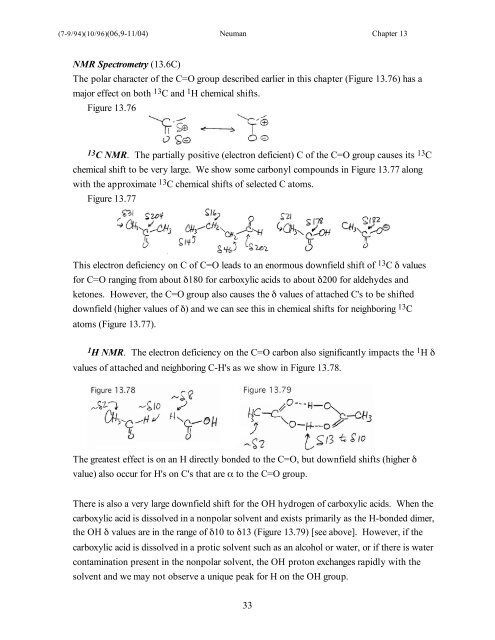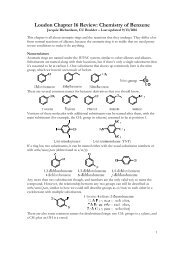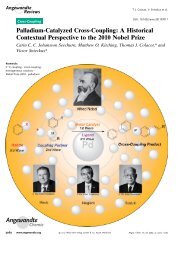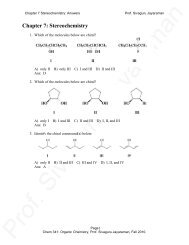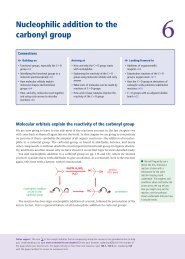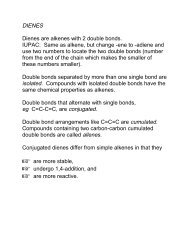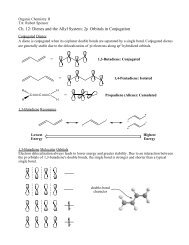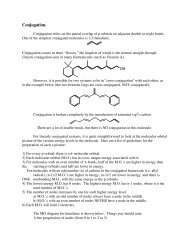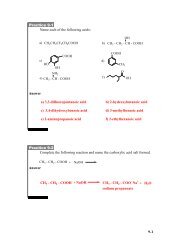chapter 13
chapter 13
chapter 13
Create successful ePaper yourself
Turn your PDF publications into a flip-book with our unique Google optimized e-Paper software.
(7-9/94)(10/96)(06,9-11/04) Neuman Chapter <strong>13</strong><br />
NMR Spectrometry (<strong>13</strong>.6C)<br />
The polar character of the C=O group described earlier in this <strong>chapter</strong> (Figure <strong>13</strong>.76) has a<br />
major effect on both <strong>13</strong> C and 1 H chemical shifts.<br />
Figure <strong>13</strong>.76<br />
<strong>13</strong> C NMR. The partially positive (electron deficient) C of the C=O group causes its <strong>13</strong> C<br />
chemical shift to be very large. We show some carbonyl compounds in Figure <strong>13</strong>.77 along<br />
with the approximate <strong>13</strong> C chemical shifts of selected C atoms.<br />
Figure <strong>13</strong>.77<br />
This electron deficiency on C of C=O leads to an enormous downfield shift of <strong>13</strong> C δ values<br />
for C=O ranging from about δ180 for carboxylic acids to about δ200 for aldehydes and<br />
ketones. However, the C=O group also causes the δ values of attached C's to be shifted<br />
downfield (higher values of δ) and we can see this in chemical shifts for neighboring <strong>13</strong> C<br />
atoms (Figure <strong>13</strong>.77).<br />
1 H NMR. The electron deficiency on the C=O carbon also significantly impacts the 1 H δ<br />
values of attached and neighboring C-H's as we show in Figure <strong>13</strong>.78.<br />
The greatest effect is on an H directly bonded to the C=O, but downfield shifts (higher δ<br />
value) also occur for H's on C's that are α to the C=O group.<br />
There is also a very large downfield shift for the OH hydrogen of carboxylic acids. When the<br />
carboxylic acid is dissolved in a nonpolar solvent and exists primarily as the H-bonded dimer,<br />
the OH δ values are in the range of δ10 to δ<strong>13</strong> (Figure <strong>13</strong>.79) [see above]. However, if the<br />
carboxylic acid is dissolved in a protic solvent such as an alcohol or water, or if there is water<br />
contamination present in the nonpolar solvent, the OH proton exchanges rapidly with the<br />
solvent and we may not observe a unique peak for H on the OH group.<br />
33


